
I suppose everybody at some time or other has read or had read to them a children’s fable or fairy tale. As a child we would have been fascinated by these stories, but the enchantment was enhanced by the illustrations which were set alongside the printed stories. My blog today is about an artist who was the master of book illustrations which often sat alongside stories about enchanted woods and fairy princesses. Let me introduce you to John Albert Bauer, the Swedish painter and illustrator.
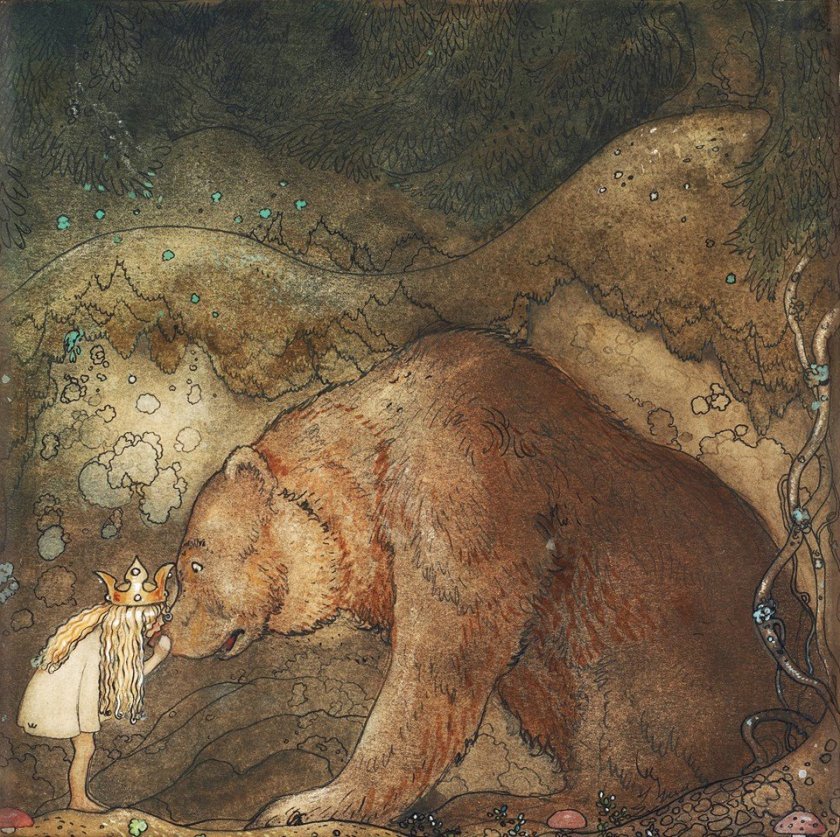
John Bauer’s father, Joseph Bauer, came to Sweden from Ebenhausen in Bavaria as a young orphaned teenager in 1863. He eventually settled down in Jönköping, which is situated at the southern end of Sweden’s second largest lake, Vättern, a lake, which would play a fateful part of his son, John’s life. In the early 1870’s Joseph married Emma Charlotta Wadell, whose parents belonged to a farming community in Rogberga, a rural area, eight kilometres south-east of Jönköping.
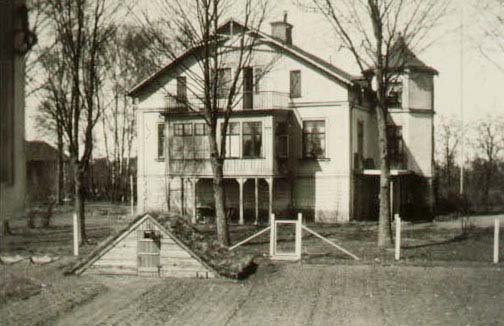
Joseph Bauer and his family lived in an apartment above their charcuterie shop in the bustling East Square in Jönköping. The family business was a very profitable venture, so much so that Joseph Bauer was able to afford to buy a summer residence, Villa Sjövik, which was built in 1881 and was situated on the west shore of the Rocksjö, a lake close to Jönköping. It was a rural location, surrounded by almost untouched nature. Looking back from the lake, forests could be seen straddling the mountains which bordered the city of Jönköping. Alas, Villa Sjövik was demolished in the 1960’s but in its place today, there is the JOHN BAUERSGATAN (John Bauers Park) bearing the artist’s name. It is now a small area of tranquillity in the middle of the bustling city and there is a sign marking the place where Villa Sjövik once lay.
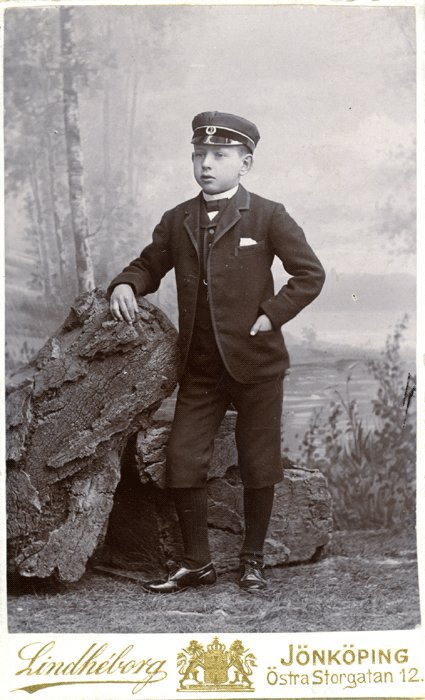
John Bauer was born on June 4th, 1882. He was the third of four children having an elder brother and sister, Hjalmar and Anna and a younger brother Ernst. When John Bauer grew up he spent much time exploring the woods and the nearby fields. Nature to him was his friend. Villa Sjövik was a beautiful residence with a large verdant garden and leading from it was a long jetty which led to the lake which made for an ideal bathing spot. The Bauer family enjoyed their time at their summer residence, away from their town apartment, and after a time, they decided to live permanently at Villa Sjövik.
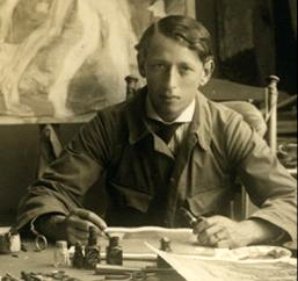
The Bauer family happiness ended abruptly in 1889 when John was seven years old. His sister Anna died suddenly at the tender age of thirteen and this death had an overwhelming effect on John and his family. Living in an apartment situated above their father’s charcuterie, he was always given to sketching and drawing. During his time at Villa Sjövik, he would spend time walking through the Småland forest, always with his sketchbook. It was probably during these teenage years that he began to draw images of the imaginary creatures which he believed inhabited the woods, such as forest trolls and it could be the time that his imaginary fairy-tale world evolved. Another reason for John’s fascination with the world of fairy tales came from the numerous stories he and his siblings were told by their maternal grandmother Johanna Ellqvist. In these recounted myths and legends, she would tell her grandchildren about superstitions and the powers and the secrets of nature which undoubtedly remained in John Bauer’s mind and would play such a big part of his artistic life.
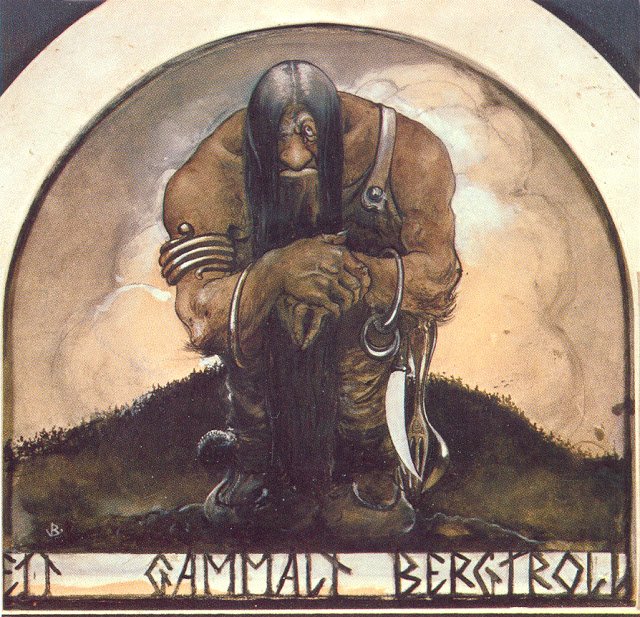
His initial schooling was at Jonkopings Hogre Allmana Laroverk, the Jönköping Public School of Higher Education and then from the age of ten to sixteen he attended the Jonkopings Tekniska Skola, the Jönköping Technical School. John’s passage through school was undistinguished. He was, at best, a mediocre student who lacked any interest in his studies and during lessons would often be lost in his daydreams and doodling on his books and composing caricatures of his teachers. However, one thing was certain, his ability to draw and his interest in art was undeniable. His interest in art was lost on his parents who were too occupied with their own life. They understood he did not like school and showed no interest in getting a job so were supportive when their sixteen-year-old son told them he wanted his future life to be centred around art.
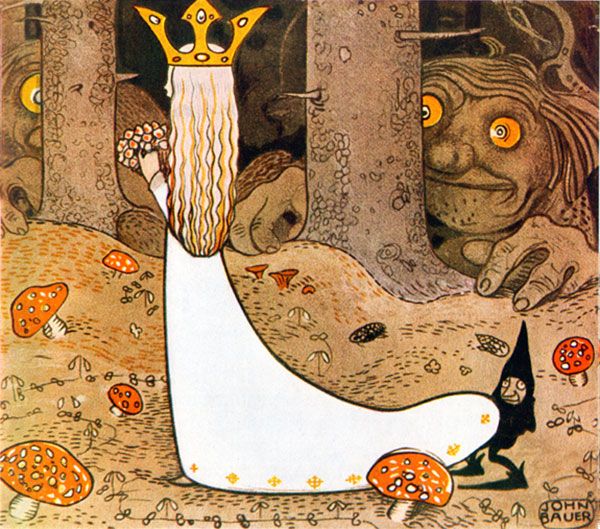
At the age of sixteen John left home and moved to Stockholm to study art. Although his parents showed little interest in his artistic ambition they did support him financially, enabling him to pursue his future plans. It must have been a difficult time for the teenager as although he was immersed in his chosen life of art he must overcome his doubts about his own ability. At sixteen years of age Bauer was too young to enrol at the Stockholm’s Royal Swedish Academy of Fine Arts and so became a student at the Kaleb Ahltins school for painters for the next two years.
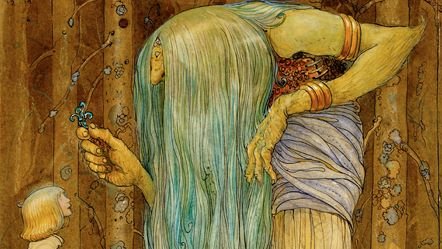
In 1900, aged 18, Bauer was accepted into the Swedish Academy of Fine Arts. He studied traditional illustrations and made drawings of plants, medieval costumes and croquis, which is the quick and sketchy drawing of a live model. There were Classical Art classes, classes which looked at anatomy, perspective, and he would also be expected to attend lectures on the History of Art. When he got home he would also be expected to complete drawing assignments. All of this was to serve him well in his later work. He did well at the Academy and in his 1991 biography of John Bauer, the author Gunnar Lundqvist quotes a comment of one of Bauer’s tutors, the noted historic painter, Gustaf Cederström, who had this to say about Bauer’s work:
“…His art is what I would call great art, in his almost miniaturized works he gives an impression of something much more powerful than many monumental artists can accomplice on acres of canvas. It is not size that matters but content…”
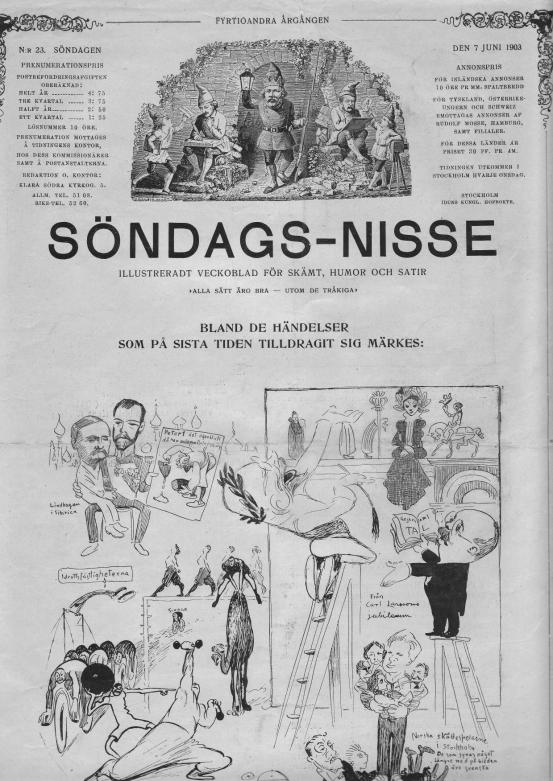
Whilst a student at the Academy he supplemented the money he received from his parents by working as an illustrator for various magazines. One of the greatest influences on him was the fellow illustrator Albert Engström, who was one of the most influential journalists in Sweden. He was a humourist and cartoonist with a great European reputation, and in America he was referred to as the “European Mark Twain”. John Bauer sold his first illustrations to the Söndags-Nisse, which was a light-hearted Swedish magazine. He continued to earn money with his illustrations for this journal and they even offered him a permanent job, which he turned down.

The far north of Sweden, Norway and Finland was the land of the Sami people but with the discovery of vast amounts of iron ore in that region much of their lands were taken over by large mining companies. In 1904 Carl Adam Victor Lundholm planned to publish a book, Lappland, det stora svenska framtidslandet (Lappland, the great Swedish land of the future) which was all about the beauty of this area known as Lapland and to focus on the native Sami people who lived in this wintry region. To make the book complete Lundholm wanted it to be illustrated. Established artists were commissioned. Bauer applied but as he was only young and inexperienced he was asked to prove his abilities by going to Skansen and sketch the Sami people.

Skansen was the first open-air museum and zoo in Sweden which is located on the island Djurgården in Stockholm. It had been in existence since October 1891 and revealed the way of life in the different parts of Sweden prior to the industrial era. This open-air museum atop the hill dominates the island and the site includes a full replica of an average 19th-century town, in which craftsmen in traditional dress such as tanners, shoemakers, silversmiths, bakers and glass-blowers demonstrate their skills in period surroundings. There is also an open-air zoo containing a wide range of Scandinavian animals including the bison, brown bear, moose, grey seal, lynx, otter, red fox, reindeer, wolf, and wolverine (as well as some non-Scandinavian animals because of their popularity). There are also farmsteads where rare breeds of farm animals can be seen.
Lundholm was pleased with what Bauer produced after his visits to Skansen and commissioned him to provide some of the book illustrations, and so in July 1904 Bauer travelled to Lappland, staying there a month, sketching, and photographing the area, its people, and their way of life. The book was eventually published in 1908 and eleven of Bauer’s watercolours graced the book. Bauer also turned many of his sketches and photographs into paintings.

A fellow first-year student of John Bauer was Ester Ellqvist. Ester was born in Ausås in southern Sweden on October 4th, 1880. She was the youngest of seven children of Karl Kristersson Ellqvist and Johanna Nilsdotter. Ester had three older brothers, Carl, Oscar, and Ernst and three older sisters, Selma, Hilda and Gerda. A couple of years after Esther was born, the Ellqvist family moved to Stockholm, where Esther went to the technical school and amongst other things learnt to draw perspective, which was one of the requirements for being admitted into Stockholm’s art academy. One of her sister, Gerda, became an art and needlework teacher, and two of her brothers, Oscar and Ernst made their living as photographers.

John and Ester never studied together as at that time males and females were not allowed to attend the same classes for the men and their artistic education was conducted differently. This was problematic for women such as Ester as although she had the artistic talent and the ambition to succeed she did not have the same opportunities as her fellow male students.
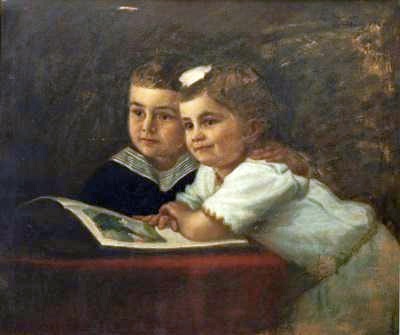
John and Ester began seriously courting around 1903 but it was not a close courtship as they were apart most of the time, and their courtship often just existed as an exchange of letters. But these letters were important as each told the other about their loves, their worries and their hopes for the future

For John, blonde-haired Ester was the personification of a beautiful fairy tale princess and she would be his great inspiration when he started to concentrate on his illustrations for fairy tale books. John and Ester were engaged in 1903, much to Bauer’s family dismay for they believed their son was too young to marry and had yet to establish himself as a professional artist or illustrator.
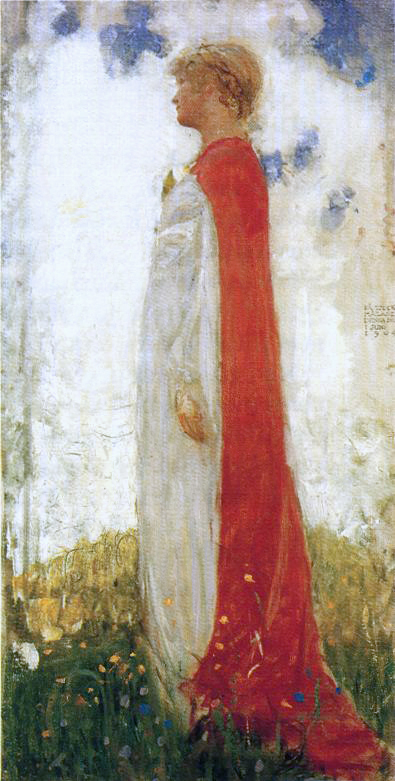
However, a year after the couple completed their Academy course they were married on December 18th, 1906. Whether it was just marriage jitters but before the wedding Ester was beginning to have doubts about her relationship with John and their future together. One must remember that the two had vastly different upbringings. Ester, except for her first couple of years, lived in the city of Stockholm and was used to all the things cities could offer. She was a lively vivacious person who had many friends and for her, life in the city was exciting and offered up many social events. John Bauer on the other hand was a solitary person who was brought up in a small town and spent much of his life alone or with his brothers wandering around the nearby forests of South Vätterbygden where he gained inspiration for his paintings. The other problem for the newly-weds was that Ester, like John, was an aspiring artist but now, after marriage, she was expected to give up her art and concentrate on her husband, their home, and the family.

The turning point in John Bauer’s artistic career came in 1907 when the publishers, Åhlén & Åkerlund, asked him, to provide illustrations for their newly launched Bland tomtar og troll, (Among Gnomes and Trolls) which was a popular Swedish annual which was full of folklore stories and fairy tales written by various authors. The first edition was published in 1907. Except for 1911 issue, Bauer’s illustrations appeared in the first nine publications. The reason that the 1911 edition of the annual did not contain his illustrations was due to Bauer and the publisher falling out about who owned the watercolours Bauer had given the publisher for the books. He wanted them, they refused saying his material belonged to them and so he declined to supply any material for the 1911 issue. The result was a disaster for the publisher as sales of that year’s annual slumped. The publisher caved in. Bauer was granted the copyright of his paintings which were all returned to him and he resumed producing paintings for their annuals and sales of the annual rose. Many of the illustrations would be of blonde-haired princesses for which Ester was his ideal muse.

One can imagine how excited Bauer was to produce the illustrations. As a child he would walk through the woods close to Villa Sjövik and daydream about the trolls and fairy princess he imagined lived in the woods and now he could convert his dreams into pictorial reality. His illustrations depicted the beauty of Swedish nature with its dense forests pierced by sunlight as it penetrated the gigantic tree canopy. There is a mysticism about his forest illustrations which may sound a chord to those who have ever explored the dark world of a forest.

Due to the restrictions of the technology available to his printers, the 1907to 1910 editions were produced in just two colours: black and yellow even though the watercolour paintings he had given the publisher were in full colour. Things changed with printing techniques in 1912, and the pictures could then be printed in three colours: black, yellow, and blue which were now closer to Bauer’s original paintings. In 1914, following his return from Italy, his illustrations started to be influenced by the Italian Renaissance. However, after eight years of supplying paintings for the annuals, Bauer had had enough and wanted to move on with his art and 1915 marked the last year he provided material for the annuals.
In 1931 a book was published which had extracts from the original volumes illustrated by John Bauer and the proceeds from its sales went to raise money for a memorial honouring Bauer. One of the most memorable illustrations from these annuals was his 1913 picture, Ännu sitter Tuvstarr kvar och ser ner i vattnet. (Still, Tuvstarr sits and gazes down into the water).

In Gunnar Lindqvist’s 1991 biography of John Bauer he states that in the Spring of 1908, John’s father financed his son and daughter-in-law’s trip to Southern Germany and Italy. John and his father Joseph had visited Germany in 1902. John and Ester’s journey lasted for almost two years during which they studied art, visiting museums and churches as well as sketching and painting. The couple visited Verona, Florence, and Siena. Whilst in Tuscany they spent two months in Volterra, a walled mountain top town of which its history dates to before the 7th century BC. They continued through Naples and Capri, constantly writing home to their families, telling them about all they had seen and done.
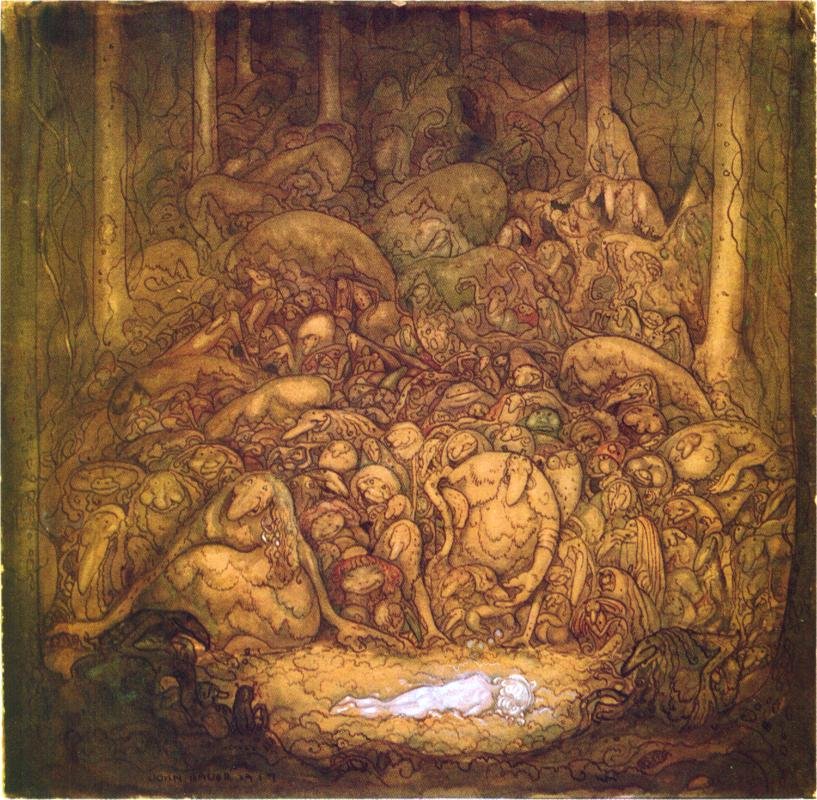
It was on their return to Sweden in 2010 that they first got sight of Villa Björkudden on the shores of Lake Bunn, a few miles south east of Gränna. They fell in love with the house and in 1914 they bought it. The following year in the autumn Ester gives birth to their first child, a boy named Bengt, but always referred to as Putte. The nickname may have derived from the Italian word putti, a figure in a work of art depicted as a chubby male child – a cherub! Bengt actually appeared in a painting by his father entitled The Root Trolls, which Bauer completed in 1917.

The marriage of John and Ester Bauer was failing. Ester saw herself and her life being taken away from her. She had wanted to be a portrait artist but instead she was simply a lonely housewife married to an artist. She believed she had nothing to show for herself. Again, another underlying cause for the unhappy marriage was Ester’s discontent about where she lived. Ester had always wanted the city life and John was content with his countryside home on the bank of Lake Brunn. They did return to Stockholm during the winter but that was never enough for Ester. Whether the decision to buy a new house, a permanent home in Stockholm was John’s attempt to save their marriage, we will never know but it sadly ended in the death of the family.
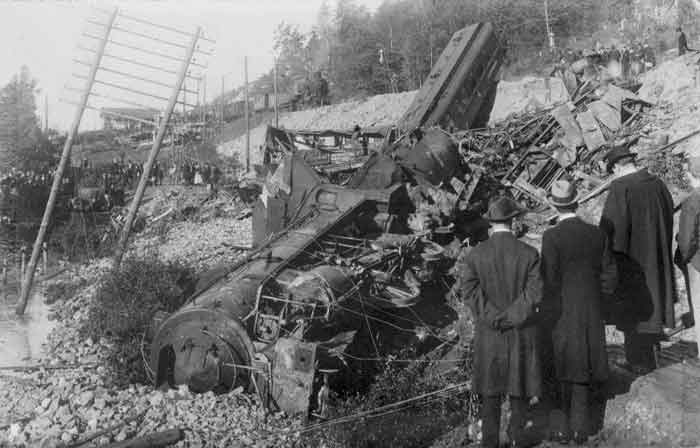
On October 1st, 1918 there occurred the worst train disaster in Swedish history caused by a landslide at Getå. Forty-two people died when the train de-railed due to the collapse of the track after the landslide. The train jumped the embankment, landing on the road below. The tragedy was well-publicized and it was to lead to a fateful decision by Bauer.
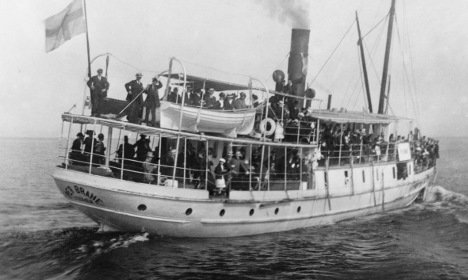
Seven weeks later, on November 19th, 1918 John, Ester and two-year-old Bengt had to go to Stockholm to their new home but because of all the media reports about the Getå train disaster John took the decision to take the ferry Per Brahe from Granna to Stockholm instead of going by train. The small steamer carried eight passengers and sixteen crew and was fully loaded with iron stoves, agricultural equipment, sewing machines and barrels of produce. All the cargo did not fit into the steamer’s hold and thus a significant portion had to be stored, unsecured, on deck, making the ship top-heavy. The weather was bad, and the ferry sailed into a raging storm. The violent rolling of the vessel in the big swell caused the deck cargo to shift, and some of it went overboard which destabilized the vessel. The ship foundered and capsized, sinking stern first, just 500 metres from its next port of call, Hastholmen.

“…The artist John Albert Bauer, his wife Ester-Lisa Bauer nee Ellqvist and son John Beng Olof passed away at sea and leave us, siblings, relatives and friends sorrowful and lamented…”
All twenty-four people on board, including the Bauers, drowned. John Bauer was thirty-six, Ester, thirty-eight and their son Bengt was just three years old when they perished that night in Lake Vättern.
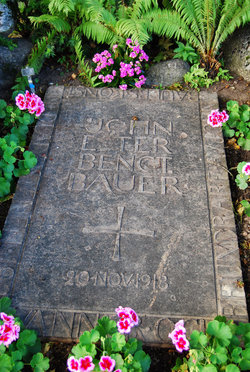
The Bauers were buried at the Östra cemetery in Jönköping.
Who knows what would have become of the Bauer family if they had not died on that fateful night. Would their marriage have survived? Would John Bauer change his artistic style? Would Ester start painting again? We will never know.
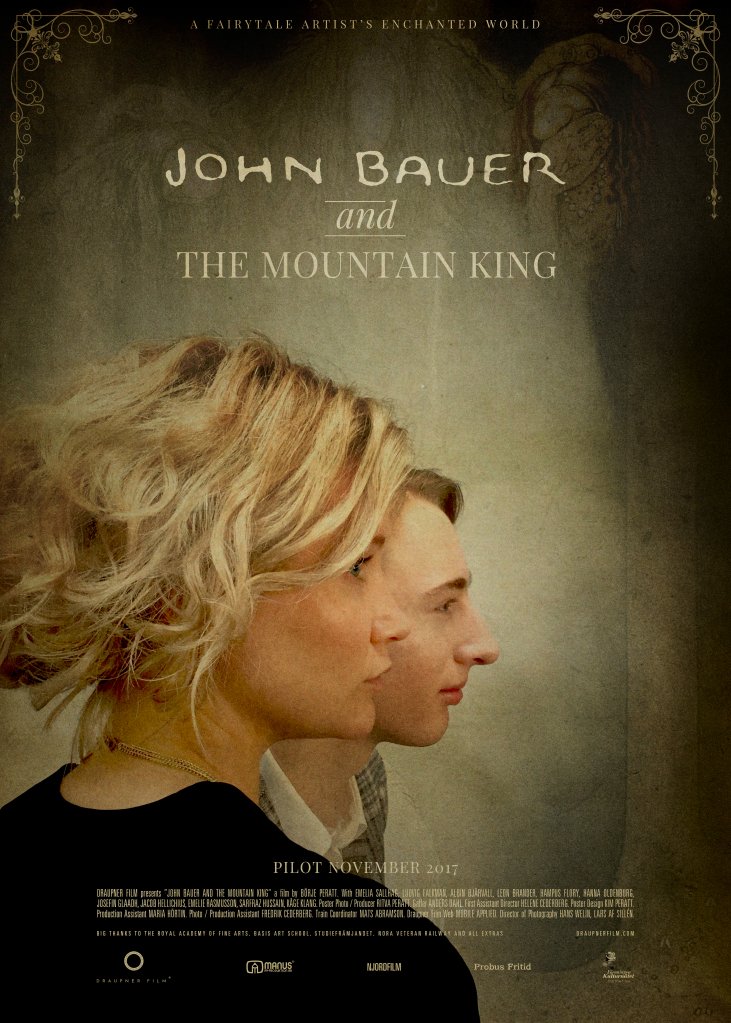
A film about the life of John and Ester Bauer was made in 2017 and can be downloaded free at:
http://www.4kmoviehub.com/watch-john-bauer-and-the-mountain-king-2018-online-free
A great deal of information for this blog was gleaned from:
Jönköpings läns museum website
Out flew the web and floated wide blog
